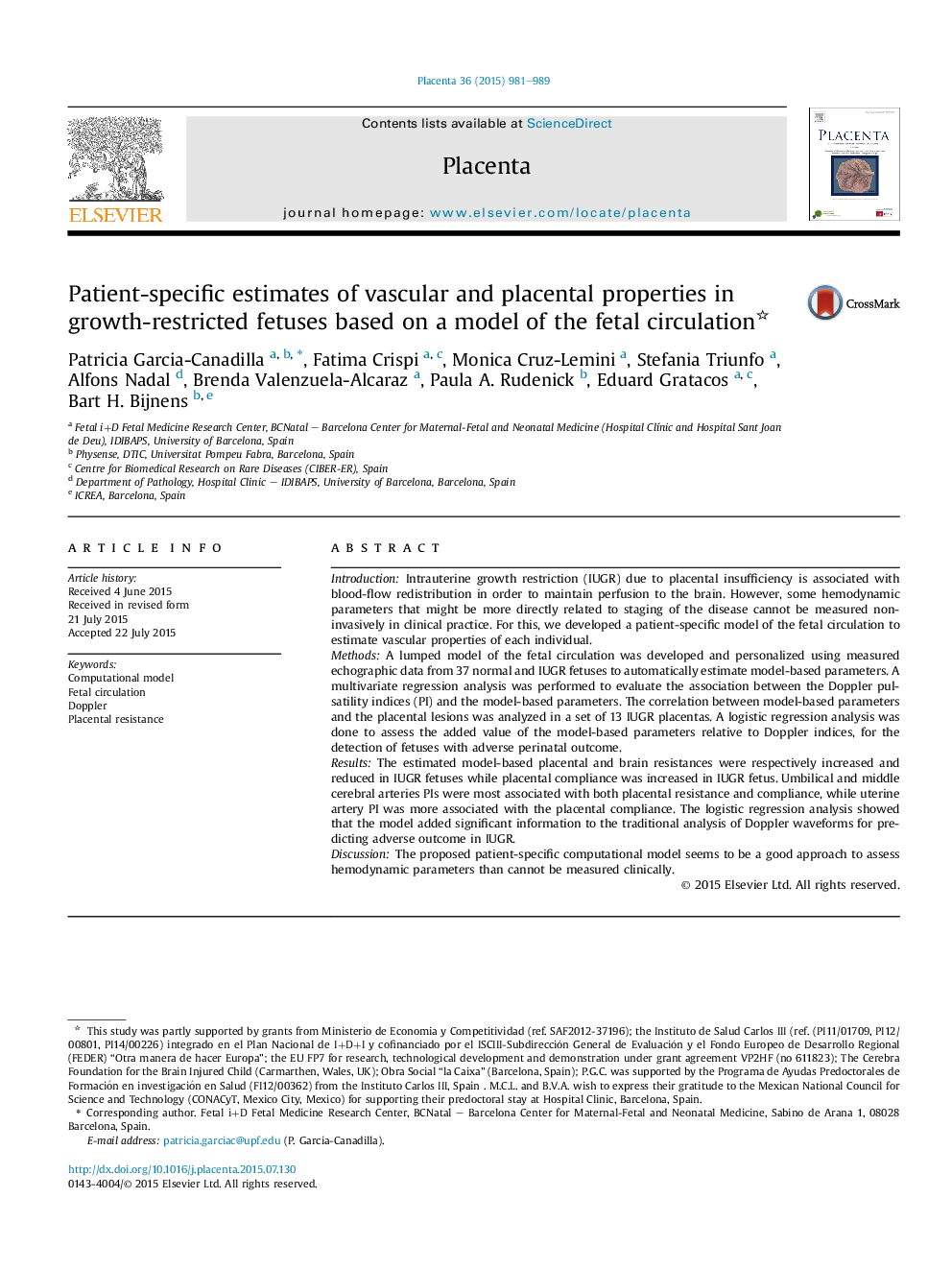| Article ID | Journal | Published Year | Pages | File Type |
|---|---|---|---|---|
| 2788543 | Placenta | 2015 | 9 Pages |
•We implemented a patient-specific model of the fetal circulation.•We estimated the vascular and placental properties of 22 controls and 15 IUGR fetuses.•Model parameters were differently associated to the different Doppler indices.•Model parameters improved the detection of adverse outcome in IUGR.
IntroductionIntrauterine growth restriction (IUGR) due to placental insufficiency is associated with blood-flow redistribution in order to maintain perfusion to the brain. However, some hemodynamic parameters that might be more directly related to staging of the disease cannot be measured non-invasively in clinical practice. For this, we developed a patient-specific model of the fetal circulation to estimate vascular properties of each individual.MethodsA lumped model of the fetal circulation was developed and personalized using measured echographic data from 37 normal and IUGR fetuses to automatically estimate model-based parameters. A multivariate regression analysis was performed to evaluate the association between the Doppler pulsatility indices (PI) and the model-based parameters. The correlation between model-based parameters and the placental lesions was analyzed in a set of 13 IUGR placentas. A logistic regression analysis was done to assess the added value of the model-based parameters relative to Doppler indices, for the detection of fetuses with adverse perinatal outcome.ResultsThe estimated model-based placental and brain resistances were respectively increased and reduced in IUGR fetuses while placental compliance was increased in IUGR fetus. Umbilical and middle cerebral arteries PIs were most associated with both placental resistance and compliance, while uterine artery PI was more associated with the placental compliance. The logistic regression analysis showed that the model added significant information to the traditional analysis of Doppler waveforms for predicting adverse outcome in IUGR.DiscussionThe proposed patient-specific computational model seems to be a good approach to assess hemodynamic parameters than cannot be measured clinically.
